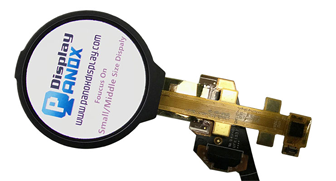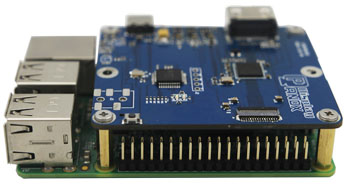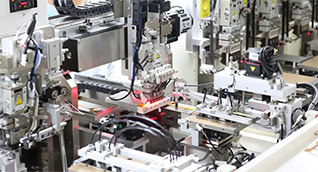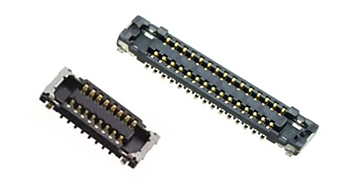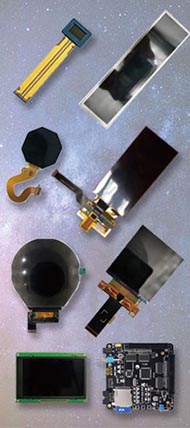A VR HMD (Virtual Reality Head-Mounted Display) is a wearable device that immerses users in a virtual environment by displaying stereoscopic images directly in front of their eyes. It transforms how we interact with digital content by providing a 360-degree immersive experience for gaming, training, simulation, and more.
What Is a VR HMD and How Does It Work?
A VR HMD is a headset equipped with screens and lenses positioned close to the eyes, delivering separate images to each eye to create a sense of depth and three-dimensional space. Sensors track head movements to adjust the displayed scene in real time, enabling users to look around and interact naturally within a virtual environment. The device often includes audio, motion controllers, and sometimes external sensors to enhance immersion.
Which Are the Most Popular VR HMDs on the Market Today?
The VR headset market features several leading devices, including:
| VR HMD Model | Key Features | Price Range |
|---|---|---|
| Meta Quest 3 | Standalone, high-res display, affordable | $300 - $500 |
| Apple Vision Pro | High-end spatial computing, eye & hand tracking | $3,499 |
| Valve Index | High fidelity, tethered, precise tracking | Premium pricing |
| Sony PlayStation VR2 | Console integration, immersive gaming | Mid-range |
| HTC Vive Pro 2 | Room-scale tracking, high resolution | Premium pricing |
These models vary by price, performance, and use case, from casual gaming to professional applications.
How Do VR HMDs Enhance User Immersion Compared to Other VR Devices?
VR HMDs provide a fully immersive experience by blocking out the real world and replacing it with a virtual one. Unlike smartphone-based VR or desktop monitors, HMDs offer:
-
Stereoscopic 3D visuals for depth perception.
-
Head tracking for natural viewpoint changes.
-
Room-scale tracking allowing physical movement.
-
Integrated audio for spatial sound.
-
Hand controllers or gesture recognition for interaction.
This combination creates a convincing sense of presence, making VR HMDs the preferred choice for gaming, training, and simulations.
Why Is Display Technology Crucial for VR HMD Performance?
Display quality directly impacts immersion and comfort. Key factors include:
-
Resolution: Higher pixels per eye reduce screen-door effect.
-
Refresh rate: Faster refresh rates (90Hz or more) minimize motion sickness.
-
Field of View (FOV): Wider FOV enhances peripheral vision.
-
Display type: OLED and Micro-OLED panels offer better contrast and color accuracy.
Companies like Panox Display specialize in supplying advanced OLED and LCD panels tailored for VR HMDs, ensuring crisp visuals and low latency essential for seamless VR experiences.
How Does Panox Display Contribute to the VR HMD Industry?
Panox Display, a leading OEM manufacturer, provides high-quality OLED and LCD screens optimized for VR headsets. Their expertise in custom display solutions, including flexible and micro-OLEDs, supports headset makers in delivering superior image quality and reliability. Panox’s collaboration with top-tier manufacturers like Samsung and LG ensures they supply cutting-edge panels that enhance VR immersion.
What Are the Key Factors to Consider When Choosing a VR HMD?
When selecting a VR HMD, consider:
-
Purpose: Gaming, professional use, or casual media consumption.
-
Compatibility: Standalone vs. tethered to PC or console.
-
Display quality: Resolution, refresh rate, and FOV.
-
Comfort: Weight, ergonomics, and adjustability.
-
Tracking and controllers: Room-scale tracking and input options.
-
Price: Budget constraints vs. features.
For example, Meta Quest 3 offers affordability and standalone convenience, while Apple Vision Pro targets high-end mixed reality users.
How Are VR HMDs Evolving with Emerging Technologies?
VR HMDs are integrating new technologies such as:
-
Eye and face tracking for natural interaction.
-
Hand tracking and gesture control eliminating the need for controllers.
-
Mixed reality capabilities blending virtual and real worlds.
-
AI integration for smarter environments.
-
Wireless and lightweight designs improving comfort and mobility.
Panox Display’s innovations in flexible and micro-OLED panels are pivotal in enabling these advancements by providing compact, high-performance displays.
Can VR HMDs Be Used Beyond Gaming?
Absolutely. VR HMDs have applications in:
-
Healthcare: Surgical training, therapy, and rehabilitation.
-
Education: Virtual classrooms and immersive learning.
-
Military and aviation: Simulations and mission rehearsals.
-
Automotive: Design and prototyping.
-
Entertainment: Virtual cinemas and social VR.
Their ability to simulate real-world scenarios safely and cost-effectively makes VR HMDs invaluable tools across industries.
How Does the Quality of VR Displays Impact User Comfort and Health?
Poor display quality can cause eye strain, headaches, and motion sickness. High refresh rates, low latency, and high resolution reduce these risks. Displays with accurate color reproduction and minimal flicker, like those supplied by Panox Display, contribute significantly to user comfort during extended VR sessions.
What Are the Challenges Facing VR HMD Adoption?
Despite advances, challenges include:
-
High cost of premium headsets.
-
Bulkiness and weight affecting comfort.
-
Limited content ecosystems for some platforms.
-
Technical barriers such as setup complexity.
-
Motion sickness in sensitive users.
Ongoing improvements in display tech and ergonomics by suppliers like Panox Display aim to overcome these hurdles.
Panox Display Expert Views
"The future of VR HMDs hinges on the synergy between display technology and ergonomic design. At Panox Display, we focus on delivering OLED and LCD panels that not only provide stunning visuals but also enhance user comfort through reduced latency and improved color accuracy. Our collaboration with global manufacturers ensures that VR devices meet the highest standards of performance and reliability. As VR expands beyond gaming into professional and industrial applications, our commitment is to support innovation by supplying adaptable, high-quality displays that empower developers and OEMs to create immersive, comfortable, and accessible VR experiences worldwide."
What Are the Best Practices for Maintaining and Using VR HMDs?
To maximize lifespan and experience:
-
Keep lenses clean with microfiber cloths.
-
Store the headset in a cool, dry place.
-
Take regular breaks to prevent eye strain.
-
Update software and firmware regularly.
-
Use compatible accessories recommended by manufacturers.
Proper care ensures consistent performance and comfort.
How Can Businesses Leverage VR HMDs for Competitive Advantage?
Businesses can use VR HMDs for:
-
Training simulations reducing risk and cost.
-
Virtual prototyping accelerating design cycles.
-
Remote collaboration enhancing teamwork.
-
Customer engagement through immersive marketing.
-
Data visualization improving decision-making.
Investing in VR solutions with reliable components, including displays from Panox Display, helps companies stay ahead in innovation.
Conclusion
A VR HMD is a transformative technology that delivers immersive virtual experiences by combining advanced display panels, tracking systems, and ergonomic design. Choosing the right headset depends on intended use, display quality, comfort, and budget. Panox Display plays a crucial role in the VR ecosystem by providing premium OLED and LCD screens that enhance visual fidelity and user comfort. As VR technology evolves, the integration of eye tracking, mixed reality, and AI will further expand VR HMD applications beyond gaming into education, healthcare, and industry. Proper maintenance and informed selection can maximize the benefits of VR HMDs for both consumers and businesses.
FAQs
1. What is the difference between standalone and tethered VR HMDs?
Standalone VR HMDs operate without a PC or console, offering portability and ease of use. Tethered headsets connect to powerful computers for higher performance and graphics quality.
2. How important is display resolution in a VR HMD?
Higher resolution reduces the screen-door effect and improves immersion, making visuals clearer and more comfortable for prolonged use.
3. Can VR HMDs cause motion sickness?
Yes, especially if the refresh rate is low or tracking is inaccurate. High-quality displays and sensors help minimize this issue.
4. Are VR HMDs suitable for professional training?
Absolutely. They provide safe, cost-effective simulations for healthcare, military, aviation, and more.
5. How does Panox Display support VR headset manufacturers?
Panox Display supplies custom OLED and LCD panels optimized for VR, ensuring high-quality visuals and reliable performance tailored to manufacturers’ needs.











